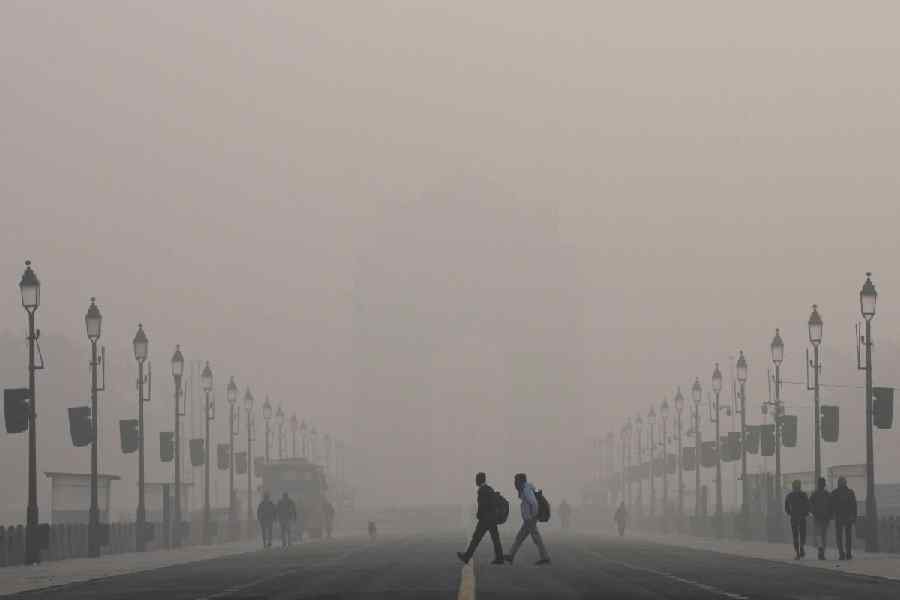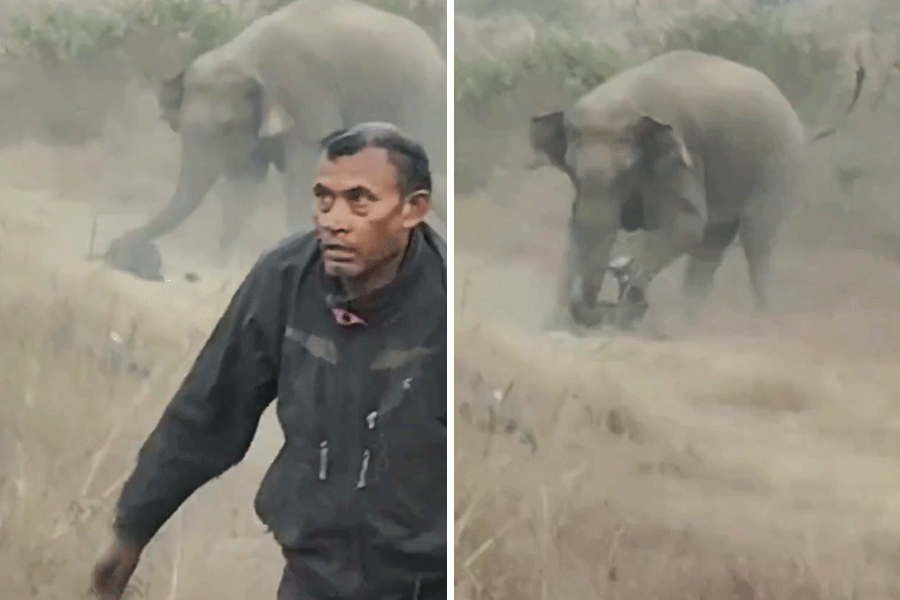 |
Savitri Gupta, a 40-year-old housewife from a well-to-do family at Preet Vihar in East Delhi, should thank one of her neighbours for being alive today. It was on his advice that Gupta, who had withdrawn into a shell, was finally taken to a psychiatrist six months ago. She was found to be suffering from severe depression and was on the verge of committing suicide. The treatment brought her back to normalcy, much to the relief of her husband and in-laws who had misjudged her listlessness as a ploy to avoid the everyday grind of household chores.
Sangeeta Pokhriyal, 36, who lived just a kilometre away in the neighbouring locality of Surajmal Vihar, wasn’t so lucky. Last week she committed suicide after strangling her six year-old daughter. She was said to be suffering from severe depression.
Pokhriyal is among the thousands of victims of depression who die, or at the very least, lead disturbed, diminished lives. Indeed, it’s estimated that severe depression accounts for nearly 8,50,000 deaths globally every year.
A recent study in the BMC Medicine Journal, covering 18 nations, showed that nearly 121 million people are suffering from depression at present. The study, which included data gathered from Pondicherry, extrapolated that nearly 9 per cent of Indians suffer from moderate to severe forms of depression.
Though most psychiatrists in India question this extrapolation, they admit the data are quite close to that thrown up by earlier studies, which indicated that nearly 6 to 8 per cent of Indians suffer from moderate to severe forms of depression at any given time.
| DOWN AND OUT |
| According to the International Classification of Diseases, depression is defined by the following symptoms |
| ● Persistent sadness or low mood ● Loss of interests or pleasure ● Fatigue or low energy ● Disturbed sleep ● Poor concentration or indecisiveness ● Low self-confidence ● Poor or increased appetite ● Suicidal thoughts or acts ● Agitation or slowing of movements ● Guilt or self-blame |
 |
| You know you are |
| ● Not depressed — if you have fewer than four symptoms ● Mildly depressed — if you have four symptoms ● Moderately depressed — if you have five to six symptoms ● Severely depressed — if you have seven or more symptoms |
Dr B.M. Suresh, a clinical psychiatrist at the Bangalore-based National Institute of Mental Health and Neurosciences (Nimhans), who has co-authored research papers on the prevalence of mental disorders in the country, says 20 to 30 per cent of Indians run the risk of a bout of depression in their lifetime. “As the life expectancy increases the incidence of depression is bound to go up,” says Dr Suresh, who, however, holds that Pondicherry cannot serve as a representative sample as the Union territory has unusually high levels of alcoholism and very high suicide rates.
Depression manifests itself in different ways. Some feel sad, others become aggressive. While some lose their appetite, others binge eat. Some may have disturbed sleep and others may find it hard to stay awake. Social withdrawal, diminished sex drive, suicidal tendencies and lack of concentration are some other telltale symptoms (see box).
The good news is that depression can be treated. “Whatever be the symptoms, it’s possible to treat depression by simply bringing the levels of a brain chemical — serotonin — back to normal,” says Dr Om Prakash, associate professor of psychiatry at the Institute of Human Behaviour and Allied Sciences in Delhi, who treated Gupta.
The treatment is not expensive either. The most commonly used antidepressant — fluoxetine — costs just a few rupees, says Dr Prakash.
What worries experts is not so much the number of people suffering but the fact that very few of them receive treatment. “It doesn’t matter whether 6 per cent or 9 per cent of Indians suffer from depression. The fact is, 80 per cent or more people suffering from moderate to severe depression in this country receive no treatment or counselling,” says Dr K.S. Shaji, head of psychiatry at the Thrissur Medical College in Kerala.
If treated, depression can be cured in six months. Even in the case of people who haven’t been treated, it may vanish in one year to 18 months, says Dr Sanjay Pattanayak of Vidyasagar Institute of Mental Health and Neurosciences, in New Delhi. But if left untreated, the chance of recurrence is very high.
One reason many patients don’t receive the treatment they need is that there simply aren’t enough psychiatrists. At present India has only 4,000 psychiatrists for a population of 120 crore, that is, there is one psychiatrist for every 3,00,000 people. As compared to this, the US has 30,000 practising psychiatrists for a population of 30 crore. “Besides, nearly 90 per cent of Indian psychiatrists practise in the metros and big cities. Most districts don’t have a single psychiatrist,” points out Dr Shaji. In the smaller states there may be just one or two psychiatrists, adds Dr Prakash. For example, while Uttarakhand has one psychiatrist, Sikkim, which has the highest suicide rate in the country, has two. Even a relatively big state like Orissa has just six psychiatrists — four in Bhubaneswar and two in Cuttack.
Experts say that paucity of psychiatrists apart, mental health services in the country are plagued by a multitude of problems. First of all, it has never been a priority area for successive governments at the Centre and the states. “A mere Rs 89 crore was allocated for mental healthcare in the 10th Five Year Plan. Though it was increased to Rs 1,000 crore in the ongoing 11th Plan, this too is woefully inadequate,” says Dr Suresh.
The Medical Council of India (MCI), which sets the curriculum for medicine courses in the country, too has not made psychiatry a part of the undergraduate syllabus. After much prodding from the psychiatric community, the MCI recently made it a two-week elective to be undertaken during internship before they get the degree. This is not enough, say experts. “In the UK, all medical undergraduate students have to spend three months each in medicine, surgery and psychiatry as interns before they pass out,” points out Dr Suresh.
Psychiatrists also feel that general practitioners should be sensitised about psychiatric disorders. “I fail to understand why a GP — who is comfortable with prescribing drugs for hypertension or diabetes or even cardiovascular diseases — does not prescribe medicines for depression,” says Dr Prakash.
Indeed, more often than not, when a person suffering from depression goes to a GP, he or she is given multi-vitamin pills or iron tonics to “take care of the lethargy or low energy”. What they fail to understand is these are physical manifestations of a mental problem, says Dr Prakash, and unless the root cause is addressed they will never go away.
There is some glimmer of hope, however. In certain states, non-government initiatives to treat mental disorders are coming up. These organisations screen the rural population for psychological problems and offer medical help and counselling. For example, Sangath, an NGO in Goa, is training a large number of health volunteers who work with medical staff in state-run primary healthcare centres in identifying those who need psychiatric help.
In Kerala, two organisations — Mehac Foundation and Mental Health Action Trust (MHAT) — have set up a number of free clinics in rural areas. MHAT, which operates in three northern Kerala districts, has 26 rural clinics and treats more than 1,000 patients a month. “Reaching out to the patients and their families is important as they refuse to come for treatment because of the social stigma attached to psychiatric illnesses,” says Dr Manoj Kumar, a psychiatrist who founded MHAT.
“Of course, our work is only a drop in the ocean,” Dr Kumar says.
That maybe so. But it is certainly worth emulating to contain the burgeoning problem of depression in the country.











